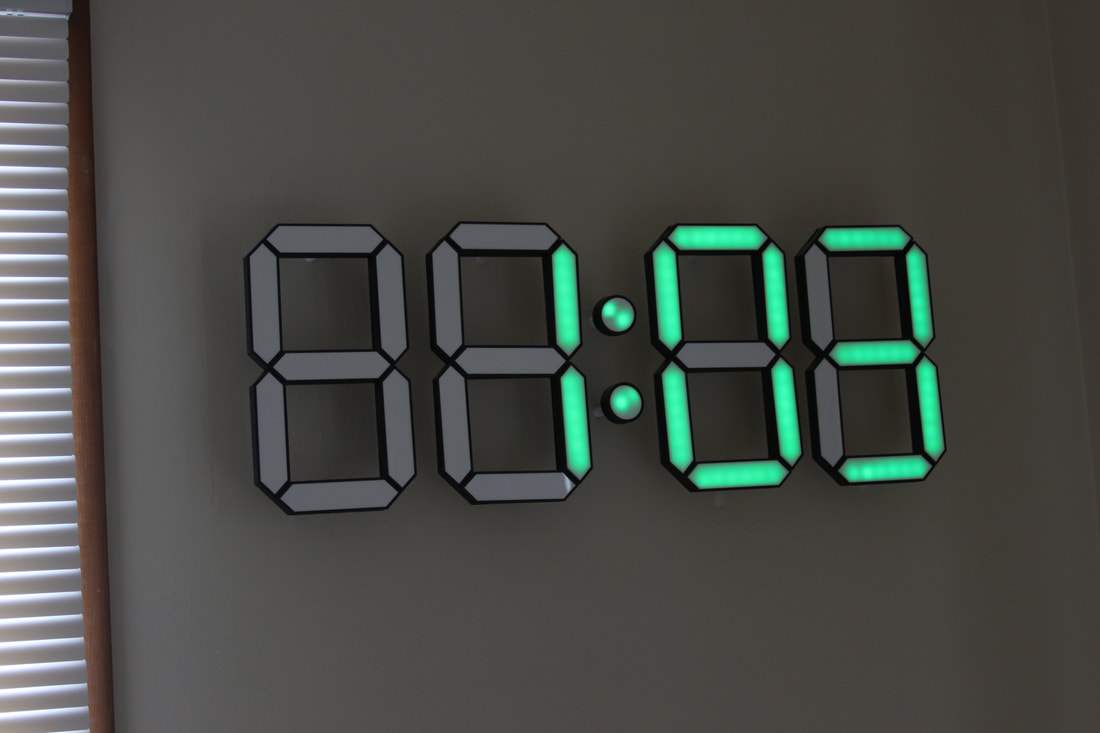
- #PERSISTENCE OF VISION 3D CLOCK DRIVER#
- #PERSISTENCE OF VISION 3D CLOCK FULL#
- #PERSISTENCE OF VISION 3D CLOCK SOFTWARE#
The light mask is mounted to the HDD motor.

The LED board sits against the HDD frame, stationary. The platters are replaced with a stationary LED board and a spinning light mask. The front face of a HDD is removed exposing the internals.
#PERSISTENCE OF VISION 3D CLOCK SOFTWARE#
This process is controlled by software so that the inductors are set in such a way that the magnetic fields pull the magnet in a circle.HDD converted into a persistence of vision display clock When a pin is set high, it turns on the LED which in turn allows current to flow through the photodiode, this changes the voltage on the gate of the transistor and allows current to flow between the drain and source, grounding the end of the inductor. The voltage on the gate of these transistors is connected to photodiodes, which is controlled by LEDs connected to four separate pins on the MCU. To control this grounding, the end of each inductor is connected to ground across a transistor. The inductors are set so that Vcc is constantly applied to the center of each inductor, and you can control the flow of current by grounding either side. This process is controlled by software so that the inductors are set in such a way that the magnetic fields pull the magnet in a circle. Each pair of photodiode and LED is contained within a single 4N35 chip. The voltage on the gate of these transistors is connected to photodiodes, which are controlled by LEDs connected to four separate pins on the MCU. The four transistors necessary for this are contained within the ULN2003 chip.
#PERSISTENCE OF VISION 3D CLOCK DRIVER#
See also LinkIt One Motion NightLight Stepper Motor Driver After these two seconds, the clock returns to ticking normally (it does not miss two seconds while the alarm is on).
#PERSISTENCE OF VISION 3D CLOCK FULL#
If the current time equals the alarm time, the full display is lit for two seconds. This is used to adjust for any slight variations in the motor speed. The photodiode/LED system also recalculates the period every revolution. This prevents any phasing in the display caused by compounding of errors, since any error is corrected each revolution. Each revolution, the clock is set relative to the fixed LEDs, with 12 o�clock located at the LEDs. This photodiode detects a line of IR LEDs that are fixed to the table. In order to ensure that the LEDs are flashing in the exact same location each revolution, we connected a photodiode to the underside of the spinning blade. This increased the frequency to 10.42 flashes per second, which was sufficient to achieve persistence of vision. This was only half the speed we needed, so we put a row of LEDs on either end of the spinning blade, effectively doubling the frequency of the LED flashing, since we could flash twice per revolution. This translates to 5.21 revolutions per second. This means that it takes 4*48 = 192 ms per revolution. Each step of the motor is 7.5 degrees, so it requires 48 steps to complete one full rotation. In order to achieve this speed, we were able to get the stepper motor to step every 4 ms. In order to achieve this, we determined that the LEDs needed to blink in the same location at least ten times per second to appear persistent.

If this is happening fast enough, the human eye cannot detect the down time between flashes, and will see it as the LEDs being constantly on in one location.


The basic premise of the POV display is that you pulse the LEDs such that on each revolution they are flashing in the exact same location. Once at max speed, the clock pulses LEDs to create a persistent display of the current time. Once the times are set, the clock spins up to a very stable speed, where small interferences will not disrupt the rotation of the clock. The current time and alarm times are preset into the clock before it begins to spin. The clock has a visual alarm system which lights up the entire display for two seconds if it reaches an alarm time. The goal of our project was to create a persistence-of-vision (POV) analog clock using an LED display.


 0 kommentar(er)
0 kommentar(er)
